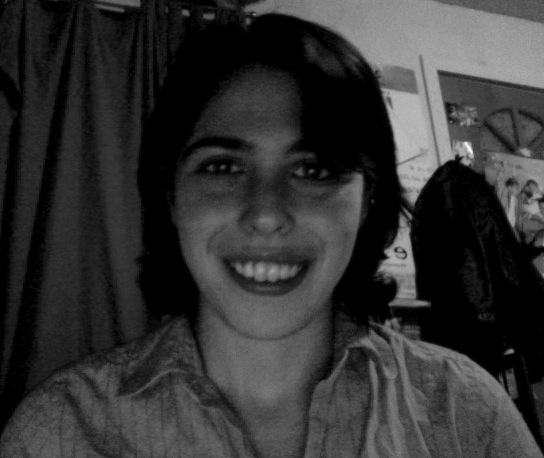Diane Douglas: Spectrum of the Last Eclipse (2010)
This is a studio piece composed for Csound and guitar being processed by Max/MSP and Ableton Live. The writing process was focused on layering together sheets of improvised sound through several different programs, all tied together through alternative tunings and hints of randomness.
The Csound orchestra was played live by passing midi information through Max/MSP. Each instrument has an infinite number of strange tunings based on the following formula:
Where n is the current midi note number being sent to Csound, y is the frequency ratio between the first and last note in a cycle, z is the number of notes in each cycle, and the constant is the base frequency of note number 0. In the equal tempered world, y = 2 for the octave ratio, and z = 12 because there are 12 notes in each octave. The Bohlen-Pierce tuning sets y equal to 3 and z equal to 13. However, by assigning y and z to continuous controllers in Max/MSP the piece is allowed to change tuning systems in real time.
The first instrument uses Scanned Synthesis, the second uses FM Singing Voice Synthesis, and the third one is based on Charles Dodge’s Harmonic Sweep instrument from the Csound Catalog. This instrument uses a basic oscillator, but its timbre will shift from one harmonic partial to another by sweeping through f-tables without re-initialization. The tuning of each partial is based not only on the frequency of the root note coming from Max/MSP but also on the Fibonacci sequence. This determines the order of the added harmonics.
All instruments were then sent through three Max/MSP patches, also being controlled in real time. The first is called Canonic Delay, it continuously records audio into two pairs of expanding buffers. The longer one plays, the more detail and complexity will appear in one’s phrases. Each voice plays back its audio at a variable playback speed, which also changes the pitch of the sample. The effect can be similar to a fugue or a free canon, since mostly open intervals are used for pitch transposition.
The second patch is called Granular Chorus. It uses granular synthesis to create five harmonizing voices out of incoming audio. Each voice scrubs backwards and forwards semi-randomly in a buffer creating layers of timbre out of small time-stretched chunks of each recording. Each voice can then be individually pitch shifted up or down in cents.
The last patch is a bank of resonant Phaser Filters written in C by Max Mathews. Each of these filters adds a single resonant peak to incoming audio. The frequency and decay time of each filter can be altered in real time to create the illusion of a constantly mutating resonant space. Incoming pitches are recorded in an expanding table, and then triggered and transposed randomly at a tapped tempo to play the filter frequencies melodically.
All three of these patches function normally in equal tempered tuning, but they can each be shifted into microtonal tunings using the same equation described above, and this is the focus of the piece. It begins and ends in equal tempered tuning, but throughout the piece the instruments and patches use alternate tunings to move in and out of the Bohlen-Pierce scale, the equal tempered scale and other stranger ones.

Diane Douglas was born in Vancouver, BC in Canada in 1986. She began studying piano at age 4 and as she grew, so did her love for mathematics. But a passion for music took over when she began playing guitar in a band and writing songs at age 13. It wasn’t until she discovered sound design and electronic music at Berklee College of Music that she rediscovered the beauty of mathematics and started combining it with music. She currently resides in Berkeley, CA working for Keith McMillen Instruments and hopes to go to graduate school to continue studying instrument design and performance.